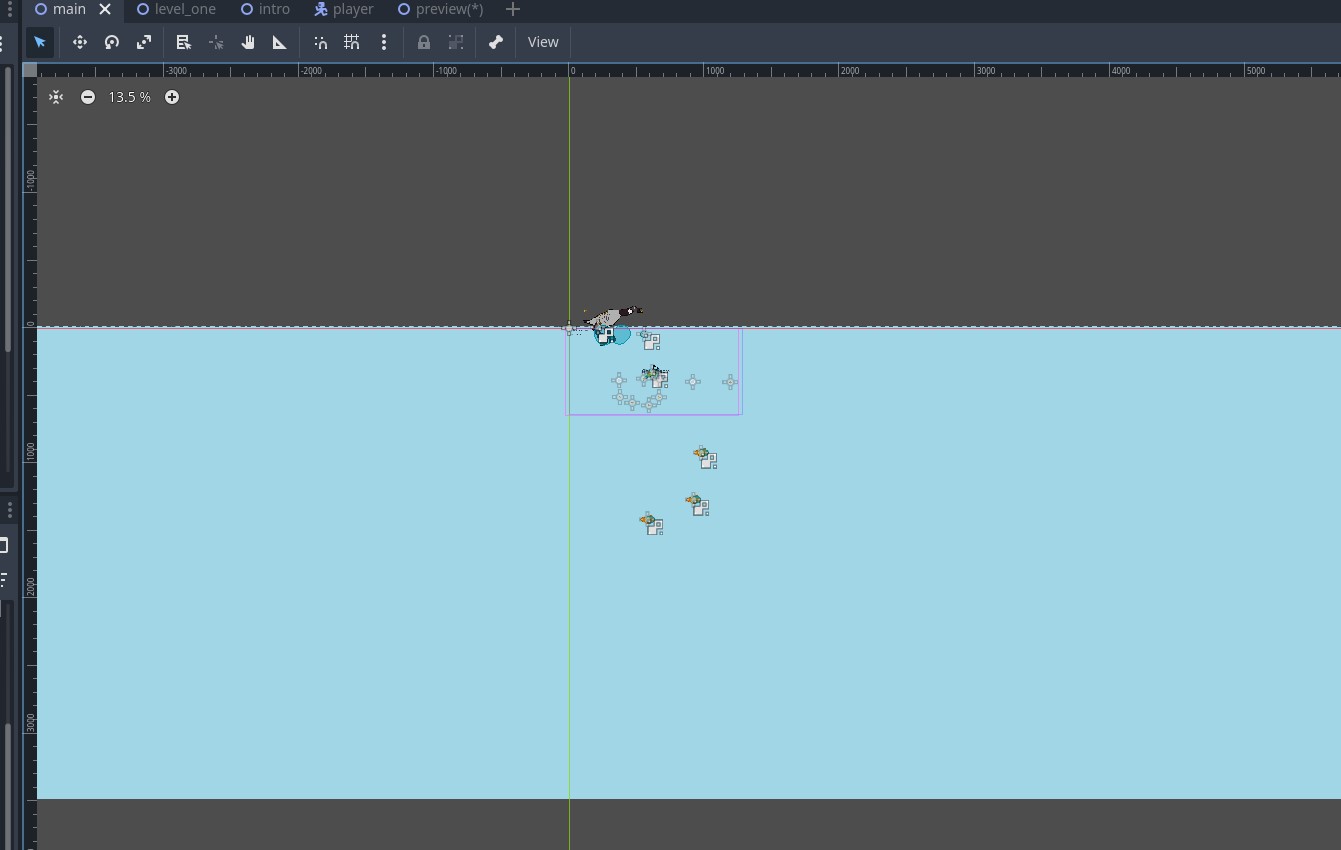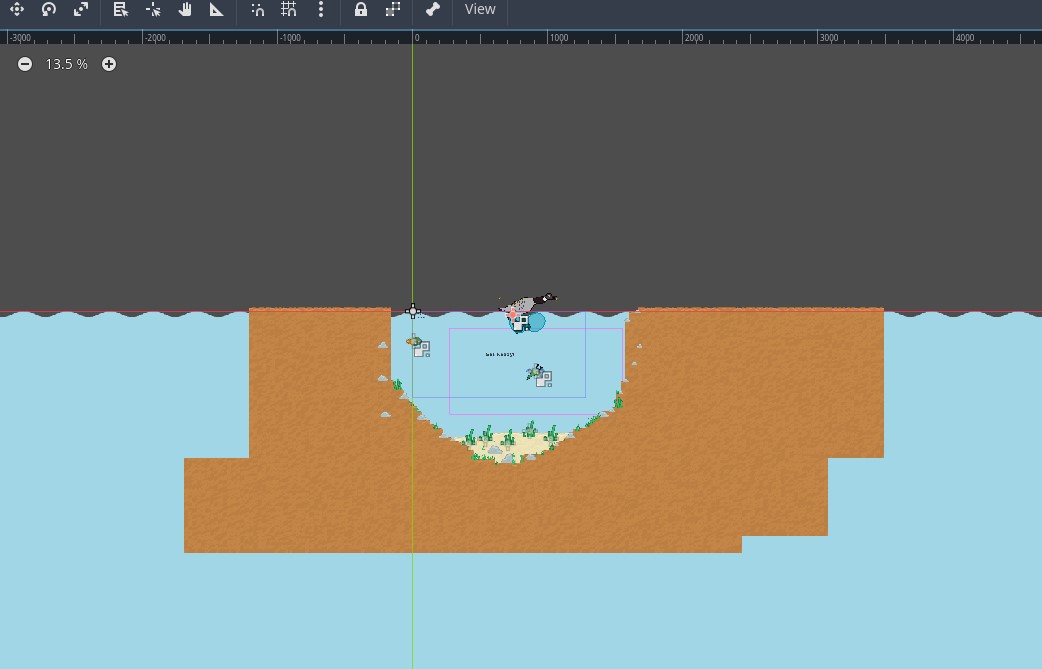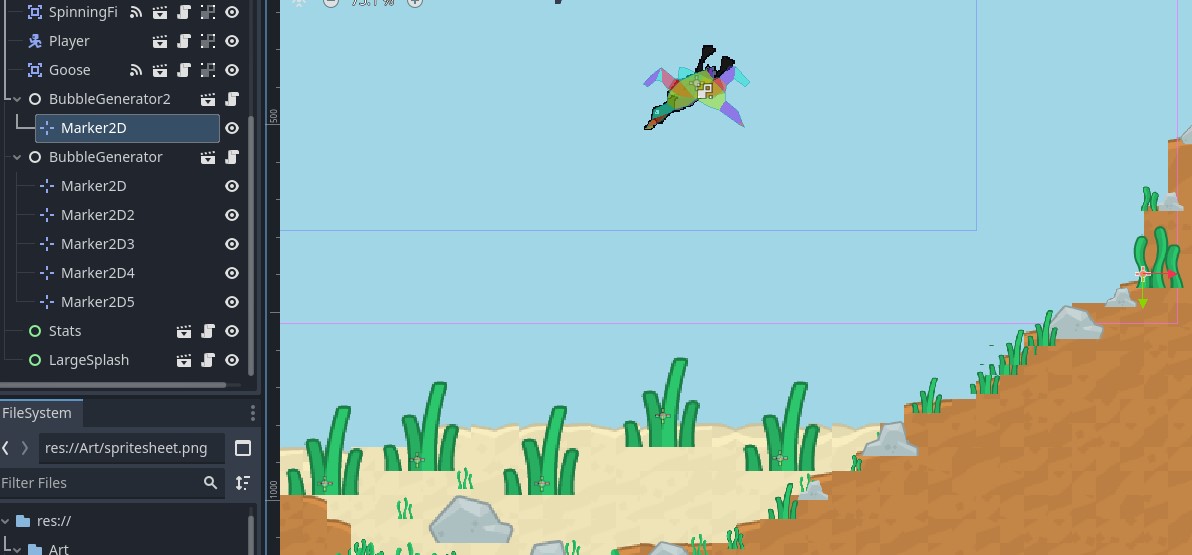Update! My teaser video is complete! I spent the morning relearning how to make use the godot tiling system. I had tried to do it on the Chromebook, but it's way too small of a screen and the build isn't... built for it. On my linux build, the lower part of the screen gets clipped just a little bit. So options don't quite work correctly when I'm clicking on them. And since tile building happens in those down there regions, it was quite cumbersome.
It was great seeing the game with some terrain built in. I had been testing features in what I call the Fish Tank. It's massive and blue and there's no containment, so the characterbody can float past the water, and it's easy to get lost as to whether the player is moving up and at what speed. 

The most rewarding part of this whole jam for me has been the creation of a bubble generator. I wanted random air bubbles to sustain the player, so I created something that would count the child node markers of the generator and use them as the spawn points. In the below image, I've placed a marker in each of the large plants. If I want to decrease the time between bubbles, I can either place duplicate markers in the same spot, or use fewer markers. The feature was so exciting for me because no one told me to do it. As I was making the air bubbles, I was already thinking "how can I make placing the spawn points easier?" and my brain came up with this on my own. It's got a built in timer as it's first child node, and I knew to code the thing to skip that node! I felt like I was thinking as a programmer and not just as some tutorial-follower old man. That's not to disparage tutorial-followers. It's what I've been doing for years, and watching smart people do these types of things (and talk about them) is part of why this idea for a system came so intuitively.

And now - it's time to work on my duck call! sound fx time!

